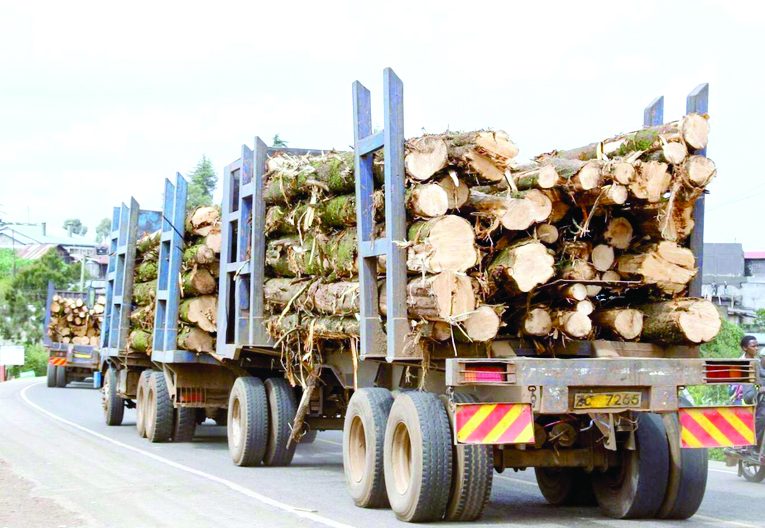Kenya turns to Tanzania and DRC to tackle wood shortage

Kenya is facing acute shortage of wood totalling to 16.5 million tonnes, the Forest Status Report, 2024 reveals. The current supply and demand projections clearly indicate that the country will face acute shortages of wood in the near future as the deficit has exceeded 50 per cent of the national supply.
“The Forestry sector has a capacity to sustainably supply 20 million tonnes (31.4 million cubic metres) of wood annually with an estimated demand of 37 million tonnes (56.2 million cubic metres) of wood resulting in a deficit of 16 million tonnes (24.8 million cubic metres) of wood,” part of the report reads.
The report data indicates that the country has the capacity to sustainably supply 20 million tonnes (31,372,531 cubic metres) of Roundwood, which is broken into timber (23.5 per cent), poles (9.7 per cent), firewood (43.5 per cent) and charcoal (23.5 per cent). At the moment, the demand is; timber (12.6 per cent), poles (3.8 per cent), firewood (44.9 per cent) and charcoal (39.2 per cent).
With these figures, timber and pole production are the only products that marginally exceeded demand, however, charcoal deficits almost at 50 per cent of the national supply.
Harsh reality
“This is therefore an indication that domestic wood fuel users have to resort to unsustainable sources or deplete growing stocks, which subsequently leads to considerable deforestation or in some cases resort to use agricultural residues,” the report adds.
The report paints a grim picture of the loss and degradation that exacerbate their impact on already vulnerable populations with direct repercussions on livelihoods.
“Degraded land in Kenya is estimated at 21.6 per cent (Gichenje and Godinho, 2018) with about 12,000 hectares of forest land converted to other uses or lost through natural causes every year,” the report reveals.
With such massive degradation and deforestation, Kenya’s 15 billion greening campaign remains a mirage as the rate of deforestation remains higher than growing of trees.
Filling gap
The deficits indicate that wood product consumers, especially in the construction industry, have to rely on imports, especially of hardwood for furniture making and softwood for construction activities or use of substitutes such as metals and plastics in various construction activities.
To fill this gap, Kenya therefore imports timber from Tanzania and the Democratic Republic of Congo. The import of wood products continues to deny Kenya resources with the country’s forestry sector contributing 3.6 per cent to the GDP.
“With the current reforms and measures we are undertaking, we want to increase this contribution to 10 per cent,” Environment and Forestry Cabinet Secretary Aden Duale said during the launch of the report.
Regarding international trade, Kenya is a net importer of forest products. The imports of wood and wood-related articles amounted to Sh15.2 billion, the major share of which constitutes paper board, but also wood-based panels and pulp.
In comparison, the value of exports was about Sh2.7 billion.
Increased importation
Kenya’s major trading partners have been Tanzania at 16 per cent of forest imports, South Africa 12 per cent, Sweden 10 per cent, India 8 per cent, and China and Egypt, both at 6 per cent.
Current trade trend indicates that Kenya mostly exports Eucalyptus wood processed into veneers to China and India.
In 2023, Kenya exported wood articles of wood and charcoal to China and India worth Sh504 million (US3.9 million) and Sh336 million (US$2.16 million) respectively.
There is also reported increase in the importation of timber from the Democratic Republic of Congo (DRC) and Angola’s Cabinda area due to the construction boom in Nairobi and environs.
On this, Duale says his Ministry envisages that with proper incentivising of investment in forestry, Kenya shall quickly close this gap leading to an end to expensive importation of timber.












